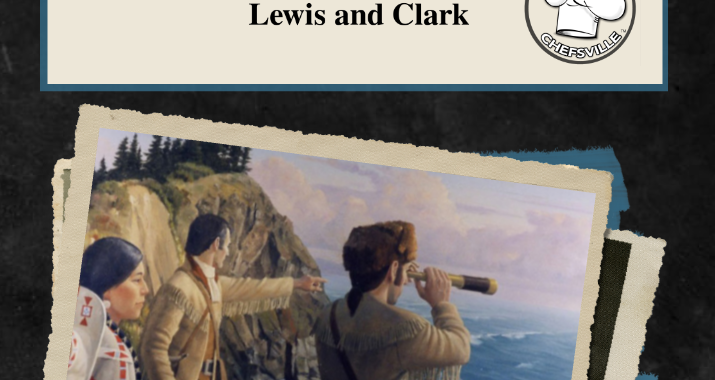One of the major decisions faced by Capt. Meriwether Lewis was how much food to take on the journey. With no modern conveniences such as packaged foods or MREs (Meals Ready to Eat) to rely on, Lewis had to accurately estimate how much food the Corps of Discovery would need for its multiyear journey into unexplored territory. If he overestimated, the corps would have trouble hauling the extra food, and, if he underestimated amounts of food needed, the explorers might starve.
Thanks to the diaries and logs kept by Lewis, William Clark and several other members of the expedition, we know how the journey turned out. No one starved on the expedition, but during extreme weather, rations were seriously depleted, leaving the hungry explorers to survive on roots or watered down Portable Soup. Other times during the 28-month trip, they had more food than they could consume as they found plentiful supplies of buffalo, elk and other game to hunt. Lewis, Clark and others on the journey wrote almost daily about food, Gunderson said. Sometimes, it was celebratory, as when buffalo and wild game were plentiful on the plains. Other times, they wrote matter-of-factly
about the hunger they faced during months when food wasn’t available on the trail. As they neared the Pacific Northwest, they wrote graphically about violent reactions their bodies sometimes had after eating dried fish or unfamiliar roots to stave off hunger. Among the entries: 3,705 pounds pork, 3,400 pounds of flour, 112 pounds sugar, 1,600 pounds hulled corn, 193 pounds soup, 100 pounds hog lard, 50 pounds coffee, 750 pounds salt and 100 pounds beans and peas.
The “gluey” Portable Soup that Lewis took on the journey saved the expedition from starvation in fall 1805 when hunting was scarce and provisions were running low, Gunderson said. The explorers added water to it to make a thin broth in lean times. When vegetables or meat were available, the portable soup served as a base for a heartier, thick soup.
Lewis’ Portable Soup could have called for oxtails, an onion, carrots, salt and a bay leaf. There was a provider of food called the purveyor, who prepared Lewis’ 193 pounds of soup for the journey would have used 772 pounds of oxtails.
Various entries from the diaries and journals make note of days when buffalo and game were available, but the animals were so thin that they yielded little edible meat. An entry for Nov. 19, 1804, revealed that the explorers killed 32 deer, 12 elk and one buffalo just to get an adequate amount of meat to eat. Another staple of the journey, hardtack biscuits, were eaten with elk jerky for lunch along the trail, since the explorers only cooked at night, after a long day of travel. The bland biscuits tasted similar to pita bread without the leavening or yeast.
The recipe for hardtack is best eaten fresh from the oven, is recommended. Once they cool, they tend to toughen. The Corps of Discovery relied on hardtack during its journey. All along the route the people and their customs and the foods they ate were part of the window into how Lewis and Clark understood this area they were traveling through,” Gunderson said. Even though Lewis and Clark’s crew had to carry so much of their food over the mountains and while fighting strong river currents, they also hunted as they traveled west and returned. They bridged friendships with tribes to trade for needed food, so the explorers ate relatively well.
